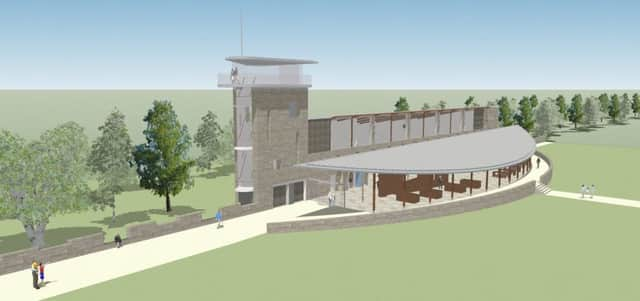Council agree to sell Falkirk parkland for a proposed Jacobite centre


The sale can now go ahead to a trust that wants to create a state-of the-art centre — with a cafe, gift shop and exhibition area — that it says will attract thousands of tourists as well as academics and history buffs to remind them of Falkirk’s place at the heart of the Jacobite uprising.
The man behind the project is Linlithgow businessman Roddy Tulloch, who has been passionately interested in the Jacobite period for more than 20 years and has a significant private collection that will form part of the exhibition.
Advertisement
Hide AdAdvertisement
Hide AdHe and his daughter, Alison Tulloch, are among seven members of the Battle of Falkirk Muir (1746) Trust, which they say will soon also get charitable status.
Mr Tulloch believes they couldn’t have a better site than South Bantaskine, where Bonnie Prince Charlie himself once looked on as the battle – involving nearly 20,000 combatants – raged for a brief but intense time.
The Battle of Falkirk Muir (1746) may not be as famous as Culloden but, says Mr Tulloch, it is a hugely important part of the story to restore the Catholic Stuart dynasty to the British throne.
There were several uprisings over the years, although the final rebellion of 1745 is the most famous.
Advertisement
Hide AdAdvertisement
Hide AdThe battle of Falkirk Muir, on January 17, 1746, was the Prince’s last victory on the campaign that would end in defeat, just a few months later, on the bloody battlefield of Culloden, near Inverness.
“It didn’t change anything, of course, because they eventually lost, but it was a major battle. Everyone in Scotland and probably everyone in England would have been talking about it at the time,” said Mr Tulloch.
His aim is that the world class exhibition will once again get people talking – and coming to Falkirk to find out more.
He and the trust have been working closely with neighbouring landowner Callendar Estates to develop walks around the area which will signpost more of the area’s history.
Advertisement
Hide AdAdvertisement
Hide AdThe only part of the centre and surrounding land that will charge for entry will be the exhibition and visitors will be encouraged to explore the surrounding parkland and woodland and even Falkirk High Street, which also has Jacobite connections.
Falkirk Council executive’s decision means the trust can now apply for planning permission as well as firm up ideas for funding, which will come from a mixture of private and public sources.
“It’s going to be a world class facility – if it’s going to be done, it’s going to be done properly!” said Mr Tulloch.
He also hopes that the project will finally uncover one of the missing pieces of the puzzle – the actual location of the battle which eyewitness accounts have described enough to get a rough location.
Advertisement
Hide AdAdvertisement
Hide AdMr Tulloch is confident that the research that will be done at the centre will uncover the exact location of the battlefield and the site where the bodies are buried.
Mr Tulloch’s personal collection of memorabilia, gathered over the years, includes swords belonging to Jacobite leaders, Lord Pitsligo and Charles Stewart of Ardshiel, and a cooking pot that was used by Bonnie Prince Charlie when he was on the run from government forces.
Members of Falkirk Council’s executive agreed to the proposals which they heard will generate £50,000 for the council, as well as rental income, while also saving cash in maintenance fees.
The nearby stage of the John Muir Way will not be affected and the exisiting public car park will remain in place, as will access to Elm Cottage and the Seagull Trust property.
Advertisement
Hide AdAdvertisement
Hide AdIt is understood that it will take at least two years before the visitor centre will be up and running.
While all councillors agreed to sell the land, members of opposition parties raised concerns about the price of £50,000.
Councillor Robert Bissett, leader of the Labour group, questioned the fact that the sale of the ground – which had been declared surplus to requirements by the local authority – had not been done through the open market.
Conservative Nigel Harris also had concerns that the prime real estate was being sold for £50,000 and sought assurances that it would not be resold for housing three or four years down the line.
Advertisement
Hide AdAdvertisement
Hide AdThe Conservative’s Malcolm Nicol said he was surprised that 5.33 acres had been valued at only £50,000.
Labour’s Joan Coombes told the meeting she was very concerned that the deal was almost being treated like a planning application, rather than sale of land.
She said: “It seems that we are straying into planning territory rather than what we are being asked about, which is the sale of the land.
“I feel a little bit uncomfortable that we are discussing in a public forum what is effectively a planning application.”
Advertisement
Hide AdAdvertisement
Hide AdDouglas Duff, head of economic development, told councillors that the sale related specifically to this proposal and it was not unusual for a developer to want a particular piece of ground.
He said the amount had been agreed by the district valuer, which was accepted practice, for local authorities.